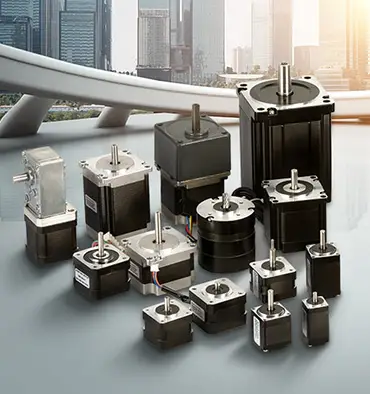How does a stepper motor controller work?
The question of how a stepper motor controller works is an important one, as it can have a significant impact on the performance and reliability of a stepper motor. In this article, we will provide a detailed explanation of how stepper motor controllers work, and why they are an essential component of many precision motion control systems. We will also discuss the different types of stepper motor controllers, and how they are used to control the movement of a stepper motor.
What is a Stepper Motor?
A stepper motor is an electric motor that rotates in discrete steps, or increments, rather than continuously. This makes it ideal for applications where precise control of the motor's position is necessary, such as in printers, scanners, and other types of precision machinery.
Stepper motors are different from other types of motors in that they have a fixed number of steps per revolution. This means that the motor can only rotate in discrete steps, rather than continuously. For example, a stepper motor with 200 steps per revolution will rotate in 200 equal steps, each corresponding to a 1.8 degree increment of rotation.
What is a Stepper Motor Controller?
A stepper motor controller is a device that is used to control the movement of a stepper motor . The controller sends electrical signals to the motor, which cause it to rotate in discrete steps. By controlling the sequence and timing of these electrical signals, the controller is able to precisely control the position and speed of the motor.
Types of Stepper Motor Controllers
There are several different types of stepper motor controllers, each of which uses a different method to control the movement of a stepper motor. Some of the main types of stepper motor controllers include:
- Microstepping controllers: Microstepping controllers use pulse-width modulation (PWM) to control the movement of a stepper motor. By varying the width of the electrical pulses that are sent to the motor, the controller is able to divide each step of the motor into a larger number of microsteps. This allows the motor to rotate in smaller increments, which can improve its precision and resolution.
- Digital controllers: Digital controllers use digital signals to control the movement of a stepper motor. The controller sends a sequence of digital signals to the motor, which cause it to rotate in a specific pattern. This allows the controller to precisely control the position and speed of the motor, and to execute complex motion sequences.
- Analog controllers: Analog controllers use analog signals to control the movement of a stepper motor. The controller sends a continuous analog signal to the motor, which varies in amplitude and frequency. This allows the controller to smoothly control the position and speed of the motor, without the need for complex digital signal processing.
Advantages of Using a Stepper Motor Controller
Despite these challenges, there are some advantages to using a stepper motor controller. Some of the main advantages of using a stepper motor controller include:
- Precision: Stepper motor controllers allow precise and accurate control of the position and speed of a stepper motor. This is important in applications where high levels of precision are required, such as in robotics, automation, and other precision systems.
- Flexibility: Stepper motor controllers can be programmed to execute complex motion sequences, which allows them to be used in a wide range of applications.


Leave a Reply